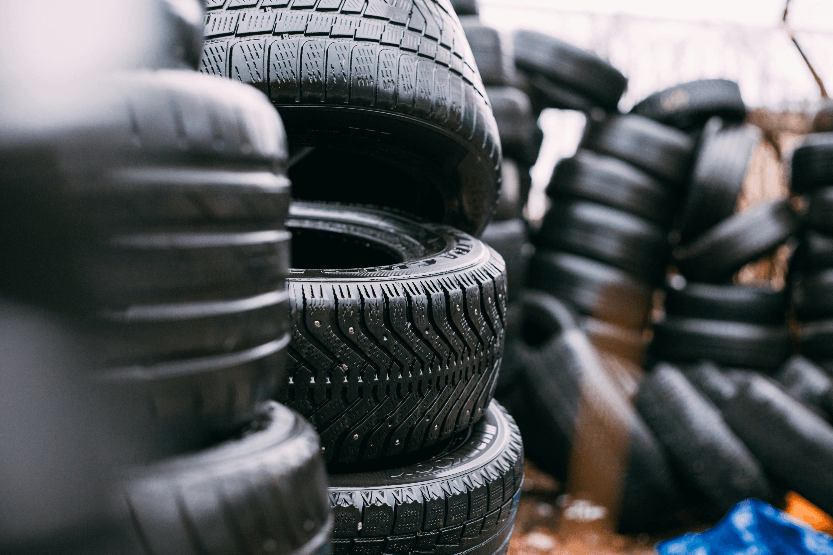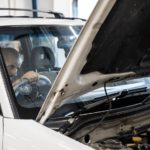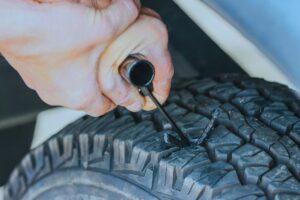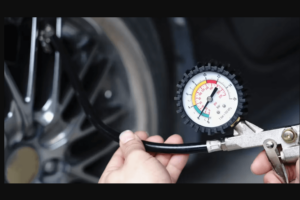Car tires with tubes were once the norm, but technology has come a long way since then. Nowadays, most car tires are tubeless, which means they don’t require an inner tube to hold the air. However, there are still some instances where car tires with tubes are used.
One of the main reasons why car tires with tubes are still used is for vintage or classic cars. These types of vehicles were designed before tubeless tires were invented, so they require tires with tubes.
Additionally, some off-road vehicles, such as dirt bikes and ATVs, still use tires with tubes because they provide better performance on rugged terrain. However, for most modern cars, tubeless tires are the way to go.
When it comes to performance and safety, tubeless tires have several advantages over tires with tubes. For one, they are less likely to puncture because they don’t have a tube that can be punctured.
Additionally, if a tubeless tire does get punctured, the air leaks out slowly, which gives the driver more time to react and safely pull over. Overall, while there are still some instances where car tires with tubes are necessary, tubeless tires are generally the better option for most drivers.
History of Car Tires

The Invention of the Pneumatic Tire
The history of car tires can be traced back to the invention of the pneumatic tire by John Boyd Dunlop in 1888. Dunlop was a Scottish veterinarian who invented the tire to improve the ride quality of his son’s tricycle.
He patented his invention in 1888 and soon after started producing pneumatic tires for bicycles.
The pneumatic tire was a significant improvement over solid rubber tires as it provided a smoother ride and better traction.
It also reduced the risk of damage to the vehicle and the road surface. The invention of the pneumatic tire revolutionized the transportation industry and paved the way for the development of the modern car tire.
Evolution from Tubes to Tubeless
The first car tires were made with an inner tube that held the air pressure, and an outer tire that provided the contact surface with the road.
The inner tube was made of rubber and was susceptible to punctures and leaks. In 1904, a French tire company introduced the first tubeless tire, which eliminated the need for an inner tube. The tubeless design was more durable, lighter, and provided better handling.
Over time, tire technology continued to improve, and tubeless tires became the standard for most vehicles. In recent years, major tire manufacturers have been working on airless tires that were originally introduced in 2012.
They are a web-like support structure that mounts on the rim without an air chamber to inflate. This technology promises to eliminate the risk of punctures and leaks, providing a more durable and safer tire.
In conclusion, the history of car tires has been marked by significant innovations and improvements in tire technology.
From the invention of the pneumatic tire to the development of tubeless and airless tires, the tire industry has come a long way. Today, car tires are safer, more durable, and provide better handling than ever before.
Understanding Tires and Tubes
Components of a Tire
A tire is an essential component of any vehicle, and it is made up of several layers of rubber. The outermost layer is the tread, which provides grip and traction on the road.
The sidewall is the part of the tire that connects the tread to the wheel, and it is responsible for protecting the tire from damage. The innermost layer of the tire is the inner liner, which is made of a special rubber material that prevents air from escaping the tire.
Tube vs. Tubeless Tires
Traditionally, car tires used to have inner tubes that held the air inside the tire. However, modern car tires have evolved, and most of them are tubeless. Tubeless tires are made up of several layers, including the carcass, which is typically made of nylon or polyester fibers.
The carcass provides the tire with its strength and structure. The inner liner of a tubeless tire is made of a special rubber material that prevents air from escaping the tire, just like the inner tube does in a tube-type tire.
The main advantage of tubeless tires over tube-type tires is that they are less prone to sudden blowouts. This is because the air pressure is maintained more evenly throughout the tire, which reduces the risk of sudden pressure drops.
Tubeless tires also tend to be lighter than their tubed counterparts, which can result in better handling and improved fuel efficiency for your vehicle.
In summary, while tube-type tires are still used in some vehicles, most modern cars and light trucks use tubeless tires. Tubeless tires are less prone to sudden blowouts, which makes them a safer option.
They also tend to be lighter than tube-type tires, which can result in better handling and improved fuel efficiency for your vehicle.
Advantages and Disadvantages

Benefits of Tube Tires
Cars with tube tires have been in use for a long time, and they have several advantages. One of the biggest benefits of tube tires is that they are less expensive than tubeless tires.
They are also easier to repair and maintain. If a tube tire gets punctured, the tube can be easily replaced, and the tire can be patched. This is not possible with tubeless tires, which require a more complex and expensive repair process.
Another advantage of tube tires is that they provide better handling, especially in wet conditions. The tube inside the tire helps to keep the tire’s shape, which improves handling and stability. Tube tires also provide a smoother ride than tubeless tires, as they absorb more shocks from the road.
Drawbacks of Tube Tires
Despite their advantages, tube tires have several drawbacks. The biggest disadvantage is that they are more prone to punctures than tubeless tires.
If a tube tire gets punctured, it can quickly lose air, which can be dangerous if it happens while driving at high speeds. Tube tires are also less fuel-efficient than tubeless tires, as they are heavier and create more friction with the road.
Another drawback of tube tires is that they are more prone to leaks. If the tube inside the tire gets damaged, air can leak out slowly, which can be difficult to detect. This can lead to a flat tire, which can be dangerous if it happens while driving.
Pros of Tubeless Tires
Tubeless tires have become more popular in recent years, and they have several advantages over tube tires.
One of the biggest benefits of tubeless tires is that they are less prone to punctures. This is because they do not have a tube inside the tire, which means there is no risk of the tube getting punctured.
Tubeless tires are also more fuel-efficient than tube tires, as they are lighter and create less friction with the road. This can lead to better gas mileage and lower fuel costs over time. Tubeless tires are also less prone to leaks, as there is no tube inside the tire that can get damaged.
Cons of Tubeless Tires
Despite their advantages, tubeless tires have several drawbacks. One of the biggest disadvantages is that they are more expensive than tube tires.
This is because they require more advanced technology and materials to manufacture. They are also more difficult to repair, as they require a special sealant to fix punctures.
Another drawback of tubeless tires is that they provide less stability and handling than tube tires, especially in wet conditions.
This is because they do not have a tube inside the tire to help maintain their shape. Tubeless tires also provide a rougher ride than tube tires, as they do not absorb as much shock from the road.
Tire Maintenance and Repair
Tire maintenance is an important aspect of keeping your car running smoothly. Regular maintenance can extend the life of your tires, improve fuel efficiency, and ensure your safety on the road. In this section, we will discuss how to maintain and repair car tires with tubes.
Maintaining Air Pressure
Maintaining the correct air pressure in your tires is crucial for safety, fuel efficiency, and tire longevity. Overinflated tires can cause a rough ride and wear out the center of the tread, while underinflated tires can cause poor handling and wear out the edges of the tread.
It is recommended to check the air pressure in your tires at least once a month and before long trips. The recommended air pressure can be found in the car owner’s manual or on a sticker located on the driver’s side door jamb.
Dealing with Punctures and Leaks
Punctures and leaks in car tires are common and can be caused by a variety of factors such as road debris, sharp objects, or a faulty valve stem. If you notice a puncture or leak, it is important to address it promptly to prevent further damage to the tire.
In some cases, a puncture can be repaired with a patch or plug, but in other cases, the tire may need to be replaced. It is recommended to have a professional mechanic inspect the tire to determine the best course of action.
Replacing Tubes and Tires
If a tire has sustained irreparable damage or has worn out beyond safe limits, it will need to be replaced. The same is true for the tube inside the tire. Replacing a tire or tube is a job best left to professionals, as it requires specialized tools and expertise.
When replacing a tire, it is important to choose a tire that is the same size and type as the original tire. It is also recommended to replace tires in pairs to ensure even wear and handling.
In conclusion, proper tire maintenance and repair can help ensure your safety on the road and extend the life of your tires. Regularly checking air pressure, promptly addressing punctures and leaks, and replacing tires and tubes as needed are all important steps in maintaining car tires with tubes.
Performance and Safety Considerations

Car tires with tubes have been around for decades, and they have been a popular choice for many car owners.
They have several benefits over tubeless tires, including better traction, improved handling, and enhanced durability. However, they also have some drawbacks that need to be considered when deciding whether to use them or not.
Traction and Handling
One of the main advantages of tires with tubes is their superior traction and handling. The tubes inside the tires provide an extra layer of cushioning that helps absorb shocks and vibrations, resulting in a smoother ride.
Additionally, the tubes help maintain tire pressure, which is critical for maintaining grip on the road. This is especially important in wet or slippery conditions, where a loss of traction can lead to accidents.
Durability and Wear
Another advantage of tires with tubes is their durability and wear resistance. The tubes help protect the tire from punctures and other types of damage, which can extend the life of the tire.
Additionally, the tubes help distribute the weight of the vehicle more evenly, which can reduce wear and tear on the tire. This can result in fewer replacements and lower maintenance costs over time.
Impact on Fuel Efficiency
While tires with tubes have several benefits, they also have some drawbacks. One of the main drawbacks is their impact on fuel efficiency.
The tubes inside the tires add extra weight to the tire, which can increase rolling resistance and reduce fuel efficiency. This means that cars with tires with tubes may have lower gas mileage than cars with tubeless tires.
In conclusion, tires with tubes have several advantages and disadvantages that need to be considered when deciding whether to use them or not. They offer better traction, improved handling, and enhanced durability, but they can also have a negative impact on fuel efficiency.
Ultimately, the decision to use tires with tubes will depend on a variety of factors, including the driver’s needs and preferences, the type of vehicle, and the driving conditions.
Final Thoughts
In conclusion, car tires with tubes were widely used in the past but have now been replaced by tubeless tires due to the numerous benefits they offer. While some vintage car enthusiasts may prefer the authenticity of car tires with tubes, tubeless tires are generally more reliable, durable, and safe.
The move away from inner tubes in car tires has been driven by safety considerations. By eliminating the inner tube, manufacturers have been able to create tires that are more reliable and safe for drivers.
Additionally, tubeless tires are more sustainable as they reduce the amount of waste generated by old inner tubes.
Looking towards the future, it is unlikely that car tires with tubes will make a comeback in the mainstream market. However, they may still be used in some specialized vehicles or for niche applications.
Overall, while car tires with tubes may have some advantages, the benefits of tubeless tires far outweigh them. Tubeless tires are the clear choice for the majority of drivers due to their reliability, safety, and sustainability.


![Honda Brake Fluid [What You Need to Know] Honda Brake Fluid](https://roadsumo.com/wp-content/uploads/2022/02/Honda-brake-fluid-150x150.jpg)






